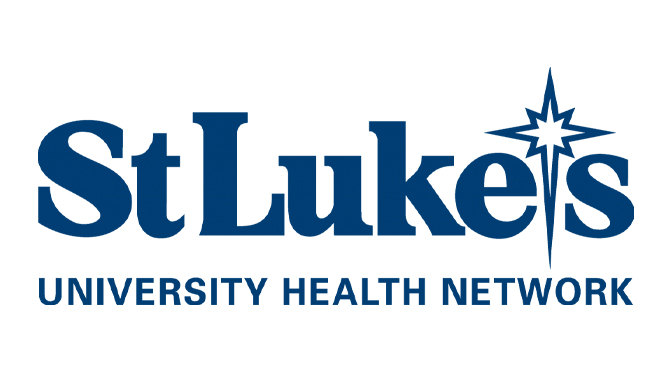|
|
Kim Krug was in all her glory last May during a Taylor Swift concert at Lincoln Financial Field. Kim, from Pennsburg, swayed to the music and traded bracelets with fellow Swifties.
While celebrating that highest of highs, she had no idea what the coming week would bring. Chest pains. Pins and needle feelings. A week after the concert, while at home, she knew something was wrong and drove to the St. Luke’s Upper Bucks Campus.
“I had just awful chest pain, and it wasn’t going away,” said Kim, 51, a Global Director for Johnson & Johnson. “And I couldn’t fall asleep. I was in so much pain. It was like hours and hours, and I couldn’t take it anymore, so I drove myself to the ER.”
Her EKG was fairly normal, said cardiologist Marcus A. Averbach, MD, who examined Kim in the ER, “but her blood tests showed high levels of troponin, indicating she was having a heart attack. I told her I was really glad she came in.”
Kim experienced a non-ST-elevation myocardial infarction (non-STEMI) that happens when the heart’s need for oxygen can’t be met. Dr. Averbach had Kim transferred by ambulance to St. Luke’s Anderson Campus, where an on-call team led by interventional cardiologist Luis A. Tejada, MD, performed an angioplasty and placed a stent to fix a 100 percent blockage in her left anterior descending artery (LAD), the so-called “Widowmaker” blockage.
“It’s the most important artery,” Dr. Tejada said. “We did the catheterization and it went very well and restored the blood flow with a very good result.”
“They saved my life,” Kim said. “I mean it. They really saved my life. The second part of the story is that because I waited so long to go in, I had a lot of heart damage, which left me with an ejection fraction of 35 percent, which is scary.”
A normal ejection fraction is 55-65%. Below 35% means your heart isn’t pumping enough blood and may be failing.
Kim went home with a LifeVest, a wearable defibrillator, and was referred to cardiac rehabilitation with Andrea Emery at St. Luke’s Quakertown in Cardiopulmonary Rehabilitation. There, she said she found the physical lifestyle and emotional support she called “absolutely extraordinary!”
“When she first came to me, she was very depressed and was feeling a lot of stress,” Emery said. “I told her cardiac rehab is where we can get rid of that LifeVest, and she looked at me like I had two heads and asked if that was true, and I said absolutely.”
Kim fully committed to the rehab process. She changed her diet, quit smoking, and didn’t just begin to exercise, but learned about cardiac risk factor modification. After “graduating” from cardiac rehab with an ejection fraction of 45%, Kim continues to take spin classes to work her heart.
“I put into practice everything I learned in cardiac rehab,
Kim said. “It’s also about nutrition, with a clean diet, and I’ve lost 60 pounds.”
That last session with Andrea was something sweet. And Swift.
“We always play music during rehab sessions, and she just loved Taylor Swift,” Emery said. “So, for her last session, I created a whole Taylor Swift playlist, and she absolutely loved it.”
Before that Taylor Swift concert in May, Kim thought she was living her best life, dancing away. Today, after a major scare and important, healthy lifestyle changes, she really is.
“None of this would have been possible without the extraordinary care from everyone at St. Luke’s,” Kim said.
About St. Luke’s
Founded in 1872, St. Luke’s University Health Network (SLUHN) is a fully integrated, regional, non-profit network of more than 20,000 employees providing services at 15 campuses and 300+ outpatient sites. With annual net revenue of $3.4 billion, the Network’s service area includes 11 counties in two states: Lehigh, Northampton, Berks, Bucks, Carbon, Montgomery, Monroe, Schuylkill and Luzerne counties in Pennsylvania and Warren and Hunterdon counties in New Jersey. St. Luke’s hospitals operate the largest network of trauma centers in Pennsylvania, with the Bethlehem Campus being home to St. Luke’s Children’s Hospital.
Dedicated to advancing medical education, St. Luke’s is the preeminent teaching hospital in central-eastern Pennsylvania. In partnership with Temple University, the Network established the Lehigh Valley’s first and only four-year medical school campus. It also operates the nation’s longest continuously operating School of Nursing, established in 1884, and 45 fully accredited graduate medical educational programs with more than 400 residents and fellows. In 2022, St. Luke’s, a member of the Children’s Hospital Association, opened the Lehigh Valley’s first and only free-standing facility dedicated entirely to kids.
SLUHN is the only Lehigh Valley-based health care system to earn Medicare’s five-star ratings (the highest) for quality, efficiency and patient satisfaction. It is both a Leapfrog Group and Healthgrades Top Hospital and a Newsweek World’s Best Hospital. The Network’s flagship University Hospital has earned the 100 Top Major Teaching Hospital designation from Fortune/Merative 11 times total and eight years in a row, including in 2023 when it was identified as THE #4 TEACHING HOSPITAL IN THE COUNTRY. In 2021, St. Luke’s was identified as one of the 15 Top Health Systems nationally. Utilizing the Epic electronic medical record (EMR) system for both inpatient and outpatient services, the Network is a multi-year recipient of the Most Wired award recognizing the breadth of the SLUHN’s information technology applications such as telehealth, online scheduling and online pricing information. The Network is also recognized as one of the state’s lowest cost providers.
Information provided to TVL by:
Sam Kennedy








